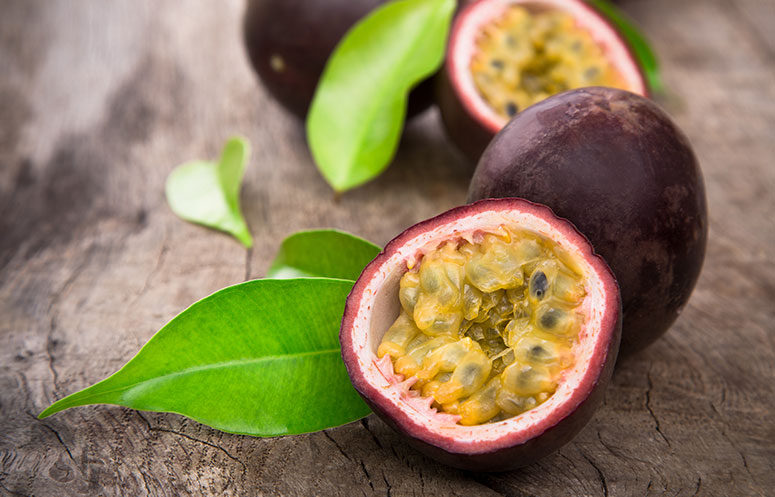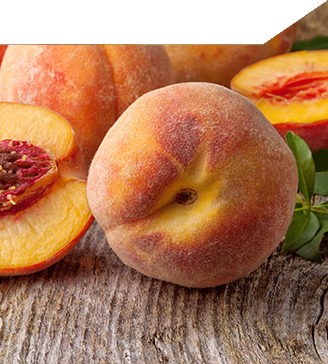
Origin / growing areas
The exact origin of the maracuja, or passion fruit, has not been established. Experts presume that originally came from the Amazon region of Brazil. The tropical regions of Central and South America offer conditions that are especially favourable for the ripening process. However, the fruit is now grown in the US, India, Australia and several African countries as well.
Description
Maracujas are genuine tropical beauties. They grow from the splendid, large blossoms of the passion flower, which measures up to eight centimetres in diameter. With their purple colour and white corona, passion flowers are not only beautiful in appearance, but also emit a very pleasant fragrance. Passion vines are climbing plants and can grow as much a five metres per year. Thus they often reach imposing lengths of up to 80 metres.
Distinctive features
The maracuja was given the name “passion fruit” by Jesuit missionaries who arrived in South America in the 17th century. They recognized the hauntingly beautiful blossoms of the tropical climbing plant as a symbol of the Passion of Christ, and thus named it “passio flora” – the passion flower.
Fruit
The skin of the maracuja ranges from bluish to purple and feels leathery to the touch. Before it has ripened, the tennis-ball sized fruit is plump and smooth, but assumes a wrinkled appearance when it is ready to eat. A typical feature of the maracuja is its juicy, yellow to orange flesh, which surrounds a core consisting of some 250 small, dark-brown seeds. The seeds are regarded as particularly beneficial to good health, as it contains numerous polyunsaturated fatty acids, which is why its oil is also used in cosmetics.
The yellow fruits are used almost exclusively by fruit-juice producers, while the bluish-purple varieties are ordinarily sold fresh in supermarkets.
Flavour
Because of the refreshingly tart flavour, maracujas are often used as a fruit supplement in fancy dishes. They have a refining effect in desserts, but also add an exotic note to salad dressings, poultry dishes and sauces. Spooned right from the skin, the maracuja is a tart-sweet snack that contains vitamin C as well as niacin and riboflavin, which have a beneficial impact on protein and energy metabolism. The best-known product is maracuja juice, an often-used ingredient in fruit juices, fruit beverages and smoothies that is also added in pure form to cocktails.


…that the maracuja is believed to help reduce blood pressure and to have a calming and sedative effect? The leaves of the passion flower are also used for medicinal purposes in South America – in the treatment of inflammation or as a tranquilizing agent for people suffering from asthma, for example.



